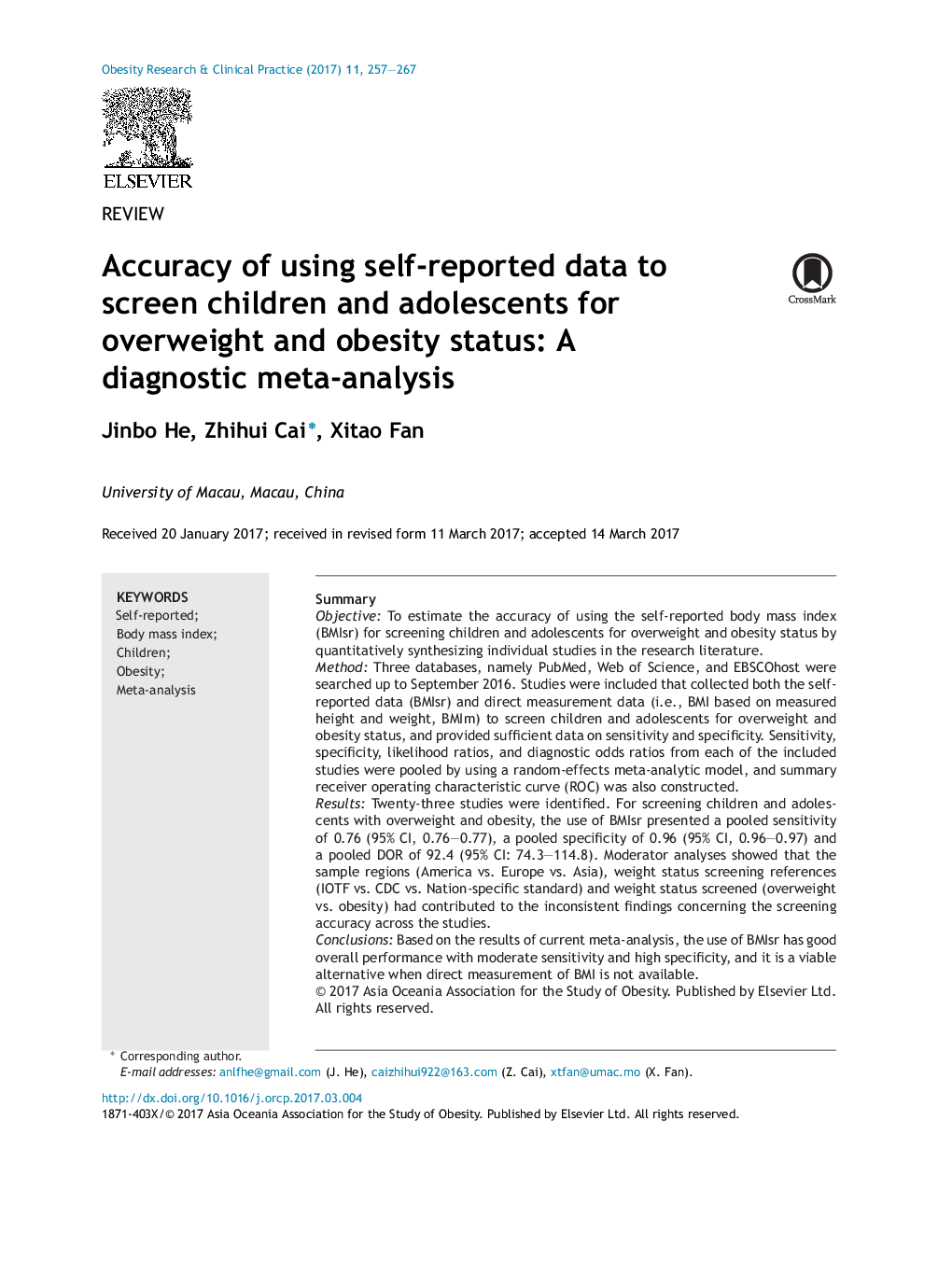| کد مقاله | کد نشریه | سال انتشار | مقاله انگلیسی | نسخه تمام متن |
|---|---|---|---|---|
| 5619176 | 1406058 | 2017 | 11 صفحه PDF | دانلود رایگان |
- BMIsr had good overall diagnostic performance with moderate sensitivity and high specificity.
- The accuracy of BMIsr differed by sample regions (America vs. Europe vs. Asia).
- The accuracy of BMIsr differed by references (IOTF vs. CDC vs. Nation-specific standard).
- The accuracy of BMIsr differed by weight status screened (overweight vs. obesity).
SummaryObjectiveTo estimate the accuracy of using the self-reported body mass index (BMIsr) for screening children and adolescents for overweight and obesity status by quantitatively synthesizing individual studies in the research literature.MethodThree databases, namely PubMed, Web of Science, and EBSCOhost were searched up to September 2016. Studies were included that collected both the self-reported data (BMIsr) and direct measurement data (i.e., BMI based on measured height and weight, BMIm) to screen children and adolescents for overweight and obesity status, and provided sufficient data on sensitivity and specificity. Sensitivity, specificity, likelihood ratios, and diagnostic odds ratios from each of the included studies were pooled by using a random-effects meta-analytic model, and summary receiver operating characteristic curve (ROC) was also constructed.ResultsTwenty-three studies were identified. For screening children and adolescents with overweight and obesity, the use of BMIsr presented a pooled sensitivity of 0.76 (95% CI, 0.76-0.77), a pooled specificity of 0.96 (95% CI, 0.96-0.97) and a pooled DOR of 92.4 (95% CI: 74.3-114.8). Moderator analyses showed that the sample regions (America vs. Europe vs. Asia), weight status screening references (IOTF vs. CDC vs. Nation-specific standard) and weight status screened (overweight vs. obesity) had contributed to the inconsistent findings concerning the screening accuracy across the studies.ConclusionsBased on the results of current meta-analysis, the use of BMIsr has good overall performance with moderate sensitivity and high specificity, and it is a viable alternative when direct measurement of BMI is not available.
Journal: Obesity Research & Clinical Practice - Volume 11, Issue 3, MayâJune 2017, Pages 257-267
